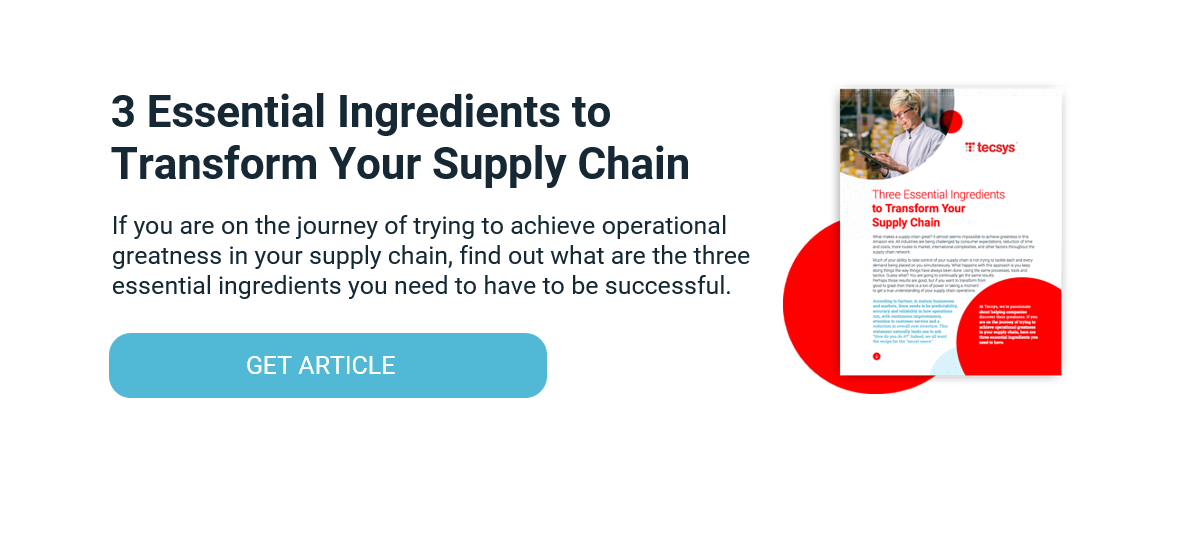Stagflation – Is It Here to Stay or Just Passing Through?

The economists are saying that we’re in a period of stagflation, a term coined by politician Ian McCleod in his speech to Parliament in the late 1960s:
“We now have the worst of both worlds — not just inflation on the one side or stagnation on the other, but both of them together. We have a sort of ‘stagflation’ situation. And history, in modern terms, is indeed being made.”
Little did Ian know that over 50 years later — spurred by a new variant here, a new supply bottleneck there — we would be reading about this term daily. And while I’m not an economist by any measure, I am a deeply curious supply chain professional that has been around for quite some time; and the catalysts that economists are attributing to this stagflation has more than piqued my supply chain curio. I was around when RFID changed the way we collected data. I waited for the world to stop at midnight during Y2K. But I don’t remember a time in my career that so many disparate elements were converging on supply chain transformation as a nucleus for success; the global control and reverberating effects that COVID would have on all of us were simply unfathomable just two years ago. Yet, its impact on the global economy has transformed how we understand supply chains and has changed how we will manage them forever.
We are hearing feedback from our customers in all industries that there remain sizeable gaps between factory orders and output. According to the Drewry World Container Index, the cost of shipping a container from Asia to Europe is 10 times higher than at the start of the pandemic, while the cost from Shanghai to Los Angeles has risen more than sixfold; it is difficult to find an organization that is not constrained by supply chain disruption.
The mix of high transportation costs, lack of production materials, container scarcity and congested ports are causing havoc everywhere you look. Whether it is computer chips for new cars, oat milk from Starbucks, or one-year wait times for some furniture items, the supply and demand curves are miles from normal. Meanwhile, labor shortages are exacerbating the challenges. You don’t have to drive far to see “We Are Hiring” lawn signs, signing bonuses, paid college tuition and other previously unheard-of perks. The world as we know it is changing and it doesn’t appear it will end soon.
They say that history repeats itself. This concept of stagflation was in the headlines during the energy crisis of the 1970s, where increased prices coupled with high unemployment was the perfect petri dish for an economic spiral. Yet, global efforts to diversify demands on oil and decentralize geographic dependence helped to stabilize and advance the industry.
Supply chain creativity has never been more needed than at this moment; not unlike 50 years ago, today we must adjust the dials of our supply chains. Many organizations are revising their supply chain strategies to enhance optimization. They may need to revamp their vendors and/or the countries from which they are securing material. Most know that the labor market will not rebound soon, even with record job openings.
The longer this persists, the greater the threat of stagflation.
On the brighter side, what follows stagnation is rather promising. As bottlenecks ease and production resumes, the savvier among us will be well-positioned to capitalize on the growth curve that economists predict. Indeed, it will be those organizations with the supply chain infrastructure to compete and thrive in that ecosystem; the one where logistical chokepoints and digital consumerism are not the hurdles they are today, but opportunities to differentiate on more flexible fulfillment.
As a marketer in the supply chain software industry, this is an intensely critical time. You may believe this is transitory or long lasting, but I choose the optimist’s view. There was a time not long ago that a small project I was doing to gate my yard tripled in cost due to the lumber shortage. That same contractor told me prices plummeted almost 50% for him in the last three weeks since, and in his words, “They got things moving again.” I’m letting this scenario be my vision for the future.
Time will tell.



